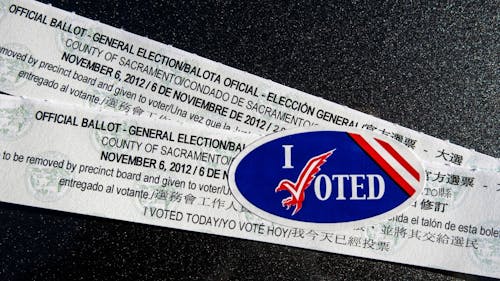SAJU: Youth election turnout hopeful, but education of all voters must follow
Column: Pride, Not Prejudice

As our country recovers from a historic presidential election like no other, it is worth taking time to reflect on the resilient parts of our enduring democracy. In the midst of the coronavirus disease pandemic (COVID-19), more people voted in the general election than in any other election in American history.
Citizens, some of them voting for the first time this year, invested in building a better future for this country.
“(52-55 percent) of voting-eligible young people, ages 18-29, cast a ballot in the ... presidential election,” according to the Center for Information & Research on Civic Learning and Engagement (CIRCLE). In 2016, this number was 42-44 percent.
Although young adults are often accused of apathy at the voting booth (since youth voter turnout is typically lower than that of other age groups), there is a myriad of reasons why this difference exists.
Many young people are new voters who are unfamiliar with the voting process. There are also legal hurdles that pose a unique challenge for younger Americans. Strict identification laws, residency requirements and different deadlines for voter registration in each state – difficult for students who attend university in another state – are just some examples of how voting can be complicated for the youth, according to NPR.
Voter registration, education and outreach have historically occurred at in-person events and activities, according to the CIRCLE. Reaching younger voters during a pandemic proved challenging for community leaders who have had to modify their strategies and messaging to embrace digital platforms.
Organizers play an important role in filling gaps in knowledge. In the CIRCLE's pre-election poll, 32 percent of young people said they were unaware if they could register to vote online in their state – another 25 percent answered incorrectly.
Along with questions about voter registration, there are questions surrounding voting practices. In order to address concerns people had about voting in-person on Election Day, organizations increased their efforts to spread awareness about the logistics of casting a ballot by mail from one’s own residence, according to the CIRCLE.
Many organizations have limited physical contact and have adapted their methods to match the guidelines of the specific localities they are targeting. Instead of knocking on doors, in places like Virginia, organizers have opted to leave election literature in the mail and follow up later via phone banking, said New Virginia Majority’s Political Director Maya Castillo, according to the CIRCLE.
Furthermore, engaging on social media generated youth interest and presented an accessible way for younger generations to sustainably engage in politics. Due to social media’s far-reaching effects, groups that are largely ignored by political campaigns – like youths of color – were included in the efforts, according to the CIRCLE.
Generation Z is a generation ripe for heightened civic and political awareness, according to the Washington Post. Growing up in a time of national trauma (concerning the terrorist attacks of 9/11 as well as the 2008 Great Recession), this generation has come of voting age during a worldwide pandemic.
And 79 percent of young people stated that COVID-19 helped them to realize how the decisions of civic leaders impact their personal lives, according to the CIRCLE.
Moreover, an important energizer of political involvement is protest. Major social movements this summer surrounding Black Lives Matter (BLM), climate justice and gun safety led to an explosion of civic awareness among younger Americans, according to the Washington Post.
Rebecca Pelham, executive director of Engage Miami, said, “Protest is really exciting because it makes power visible. You can't see 1,000 votes, but you can see 1,000 or 2,000 people in the streets and know that you are together with them.”
Targeted by voter outreach efforts, galvanized by social change in the streets and personally burdened by the hardships of COVID-19, young people took their hopes and dreams for the future to the ballot box as voters and poll workers.
Maintaining this energy should be highlighted as the time for voter engagement has ended in many states (one notable exception being Georgia’s two run-off elections in January), and the time for voter education must take its place.
Organizations must continue to reach out to younger voters to ensure their political participation, long after the administration of current President Donald J. Trump is no longer a living reality. Educational institutions must also bear the responsibility of civically teaching and informing America’s students.
Progress does not end with an election. Creating a better America does not end with an election. The only thing that has ended is Trump’s grip on the Oval Office. We will be dealing with the fallout of this administration for many years to come, but it is important to remember to keep fighting for our futures and for our lives at the ballot box.
Neha Saju is a School of Arts and Sciences junior majoring in history and political science and minoring in French and women's and gender studies. Her column, "Pride, Not Prejudice," runs on alternate Mondays.
*Columns, cartoons and letters do not necessarily reflect the views of the Targum Publishing Company or its staff.
YOUR VOICE | The Daily Targum welcomes submissions from all readers. Due to space limitations in our print newspaper, letters to the editor must not exceed 900 words. Guest columns and commentaries must be between 700 and 900 words. All authors must include their name, phone number, class year and college affiliation or department to be considered for publication. Please submit via email to oped@dailytargum.com by 4 p.m. to be considered for the following day’s publication. Columns, cartoons and letters do not necessarily reflect the views of the Targum Publishing Company or its staff.



